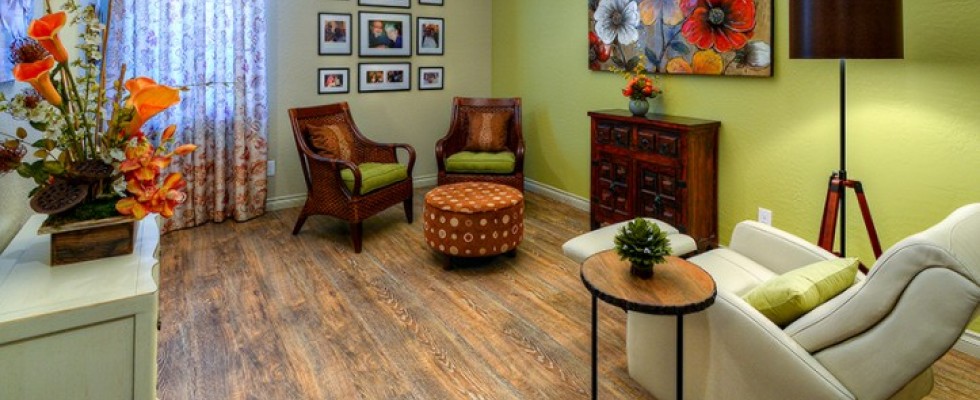
Study after study finds that most boomers and seniors want to live their retirement years in their own home. Aging in place design and remodeling to make the home accessible and safe makes it possible.
It can take one event, such as a fall, accident, stroke, illness or disease, to abruptly force a move into assisted or long-term care housing because the home no longer accommodates the resident’s needs or activities of daily living (ADL). When this happens, not only is the dream to remain at home shattered, it can leave people financially unprepared for the high cost of assisted or long-term care housing.
All too often, homeowners fail to realize, or they ignore, that their home is not aging in place ready—until it’s too late and there’s little or no time to remodel. Some people are in denial that they are aging and think they don’t need it.
Between ages 50 and 60 is the ideal time to preventively make one’s home safe for successful and independent aging, although it is worth noting that many of the elements of an aging in place-ready home can well serve people with disabilities at all ages.
Without a doubt, an aging in place-ready home would also help caregivers provide better service and make their jobs easier and safer.
Remodeling vs. Home Modifications
 A curbless shower provides safe, easy access for everyone.
A curbless shower provides safe, easy access for everyone.There’s a vast misconception amongst homeowners, contractors and the public in thinking that simply installing grab bars makes homes aging in place ready. That’s false. Grab bars and basic home modifications are important, but they only scratch the surface on what is needed to age in place successfully. According to a 2017 report from the Harvard Joint Center for Housing Studies, only 1 percent of housing stock is equipped with universal design elements, such as no-step entrances, single-floor living, wide halls and doorways for wheelchairs and lever-style handles on faucets and doors that help occupants age in their houses. Correcting these problematic design elements requires remodeling to achieve accessibility so that ADLs are easier as needs change.
Essential for aging in place is an ADA-compliant bathroom, which usually requires a floor plan redesign of an existing bathroom to make it mobility device-accessible to enable independent or assisted showering, toileting or other personal hygiene ADLs. It is necessary since homes historically have not been, and still are not being adequately designed and built for the specific needs of older adults. A full bathroom on the first floor is vital for accessibility; if there is not a full first-floor bathroom, one needs to be added.
In addition to accessibility, bathroom remodel design is critically important for life-safety reasons. Bathrooms are the number one place in the home where falls and accidents occur. According to the Centers for Disease Control and Prevention, every year, 1 out of 3 adults age 65 and older will experience a fall. Up to 30 percent of those who fall will suffer moderate to severe injuries or death. Once someone has fallen, they are 2 to 3 times more likely to fall again.
After age 50, we gradually begin to have problems with balance, which worsens with age, and makes us prone to falls. Some medications also contribute to falls. It is wise to remodel the bathroom as soon as possible as a preventive measure for longevity.
Including a curbless shower in the remodel design is one of the best ways to eliminate a bathroom trip and fall hazard. Slip-resistant flooring material and abundant lighting are also important.
The HME Opportunity: A Multi-Disciplinary Team Approach
While residential remodeling is a fast growing segment, it is also a natural extension of supplying accessibility products. HME providers and other home accessibility industry professionals such as aging in place and universal design remodel designers and contractors would serve clients well by bringing in a team of experts to discuss solutions or provide comprehensive home assessments and referral sources of vetted and trusted professionals.
 An attractive shower seat and grab bars make safety beautiful.
An attractive shower seat and grab bars make safety beautiful.A degreed aging in place or senior living interior designer, trained in ADA-compliant space planning and materials will effectively be able to assess and evaluate the environment, listen to the client, and translate the needs and wants into a functional remodel design plan, and incorporate evidenced-based design aesthetic elements that provide senior-friendly visual and psychological benefits. The designer’s aesthetic can boost the home’s value and a return on the remodel investment because it will add to the home’s appeal and marketability, rather than detracting from it.
This scenario empowers clients to make educated decisions that will have a profound effect on their safety, independence and quality of life now and in the years to come. A multi-disciplinary approach also increases opportunities for new business and can take your business image to another level, as it portrays your firm as honest, realistic and smarter in servicing the community.
